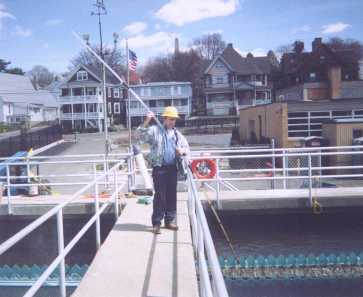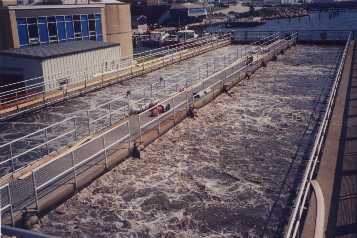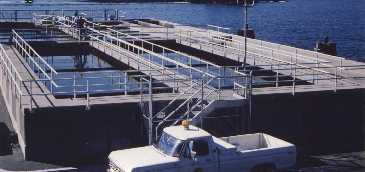

Wastewater flowing out of the primary treatment still contains some solids that need to be removed. This primary effluent is pumped to the aeration tanks where it is aerated and mixed with the return activated sludge from the final clarifiers. This mixture in the aeration tanks is called mixed liquor.
Secondary treatment is an aerobic biological process. For the activated sludge process to work properly, the operator must control the number of organisms, the dissolved oxygen in the aeration tanks and the treatment time.
A floc mass is made up of microorganisms, which need a suitable environment to live and grow. When a floc mass is returned to the aerator from the final clarifiers, the microorganisms grow as a result of taking food from the incoming wastewater (primary effluent). Mixing the contents of the aerator is accomplished by fine bubbler diffused air which also supplies the bugs with oxygen. Mixing the contents also causes the floc masses to form large flocs heavy enough to settle out in the secondary clarifiers.

The next step in the activated sludge process is removal of sludge from the secondary clarifiers. A certain amount of the solids will be returned to the aeration tanks to treat incoming wastewater, the excess "waste activated sludge" will be removed from the plant flow to the sludge thickening building. Secondary treatment removes 85-95% of T.S.S. and B.O.D.
